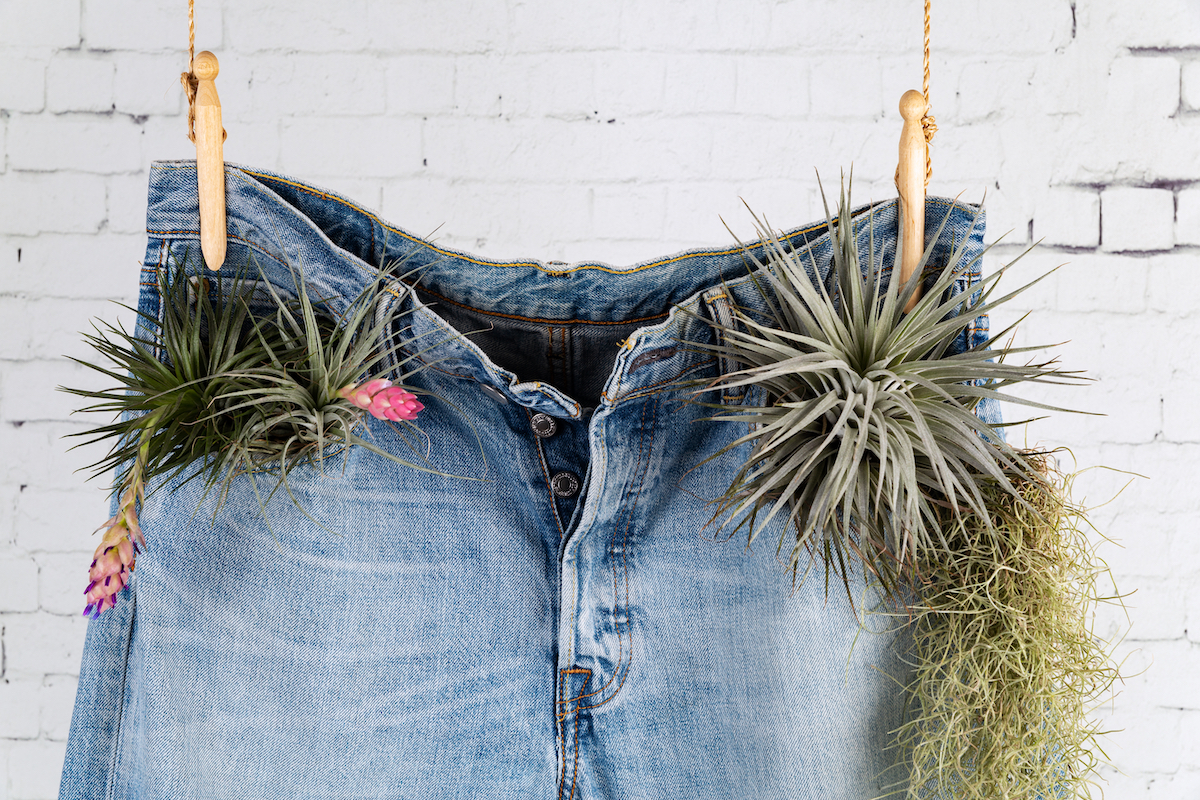Looking for a way to be more sustainable with your wardrobe? We’ve got five tips that will help!
Whether you’ve just begun your newest Marie Kondo inspired clean out, expelling all the items from your wardrobe that no longer bring you joy, or you’ve simply come to the realisation that you finally need to detach yourself from that old pair of trackies that you’ve kept far beyond its lifetime – rips, holes stretched elastic and all.
Regardless, beginning to wipe out pre-loved items from your wardrobe isn’t as easy as removing from your collection and dismissing it.
According to the Australian Bureau of Statistics 2010-2011 Waste Account, Australia generated 53.0 million tonnes of waste with 42% (22.2 million tonnes) disposed of in landfill. And, in 2019, national fashion editor of The Sydney Morning Herald and The Age, Melissa Singer, reported that in 2016 – 2017, Australian households disposed of a total of 169,000 tonnes of textiles – a figure which equates to seven kilograms per person.
Some may point the finger at the growth of fast fashion, others may wonder ‘what else is there to do with it?’ but thankfully, there are options so that you can try and save the clothes you no longer wear from landfill. Thankfully, we’ve put together five tips to help you become more sustainable with not only your fashion choices, but for the lifetime of your clothes too!
- Clothes in a wardrobe. Photographed by New Africa. Image via Shutterstock
1. Sourcing Sustainable Fashion Alternatives
When we think of sustainable fashion,we can think of itchy or poorly designed items, more suited for a cartoon hippie than for our modern lives. But, the truth is, today more than ever,both Australian and global fashion brands are jumping on board with a sustainable movement. So, whether it’s made with hemp or bamboo, they practice organic and agro-ecological farming, or even from recycling plastic bottles, there are a plethora of alternatives with a fashion-forward designs and styles. Plus, we’ve even found 12 of the most ethical and sustainable fashion brands you’ll feel good wearing – so there’s no excuse and no itch.
2. Reuse
Reusing or re-designing your clothes can be a daunting task. But if you’re a creative and you’ve got access to the internet, there’s no doubt that finding a quick and easy do-it-yourself project will turn your item into something new and purposeful. Platforms such as YouTube and Pinterest are some of the best places to start. Here you’ll be able to find millions of ways to turn your old denim jacket or that pair of hole-riddled socks into something new and exciting – whether that be painting on a new design, creating amazing homeware pieces or art, transforming it into a handbag or even using it as a toy for pets. Set some time aside to get creative -you save the old clothing item from landfill, plus you get something brand new to enjoy!
3. Donate
They say that one man’s trash is another man’s treasure. So if your item is still in a wearable or working condition, why not pass it on to someone else? Your local communityis likely to benefit from from giving your item a second chance at life. Start with places such as Vinnies (St Vincent de Paul) and The Salvos (The Salvation Army) who are always welcoming donations including clothing to jewellery, household items, books, children’s toys and even DVD’s. Of course, your search for the best donation hub is as easy as a quick Google search or phone call away. For pre-owned and loved bedding, you can also look to local pet rescue shelters who may be in need of some blankets or pillows.
- Donating or selling clothes. Photographed by suriya yapin. Image via Shutterstock
- Repurposed Denim jeans into bag. Photographed by MongPro. Image via Shutterstock
4. Sell
Brand new with tags or pre-owned and in good condition? Looks like you qualify for selling your unwanted item! Regardless of your reason to sell, whether that be wanting to make more room in your wardrobe for some new items or simply because that print on that dress no longer suits you, selling your item gives it another chance to be loved and worn by someone else. There are plenty of digital marketplaces and platforms you can easily use, and with no costs, including eBay, Depop and Facebook Marketplace. Take a few photos of your item, include a lengthy description and that’s it! Usually in this instance, buyers will pay for shipping or will pick up from your designated address. And, if you wanted to be as sustainable as possible, why not reuse packaging or opt for a compostable satchel? For luxury items, turn to consignment retailers who will (pending on the item and condition) happily purchase your item from you. It’s a win-win situation.
5. Recycle
So you’ve made the ultimate decision that your item won’t be able to make it through a second life. And, in some instances (we’re looking at you ripped stockings), this may be the best option. Usually with this step, most of us turn to the garbage bin. But, stopping you in your tracks, we wish to inform you that the bin and the garbage tip is no longer needed for this step. Cue H&M, Zara and UNIQLO.
Launching across Australia almost six years ago, today, these fashion retailers allow Australians to deposit their textiles – underwear, socks, garments and more – in store, free of charge.Plus, the clothing you deposit doesn’t need to be from that specific brand. Here, the deposited textiles are sent off and are either reworked, reused and sold, or recycled.* Otherwise, contact your local council and ask about whether they have other textile recycling alternatives in place – in some instances this may even be a doorstep pickup option.
Looking to be more sustainable in your everyday life? Here’s how to be more sustainable in the kitchen – even with your coffee pods. Or, if you want to make your workplace take on a more green, environmentally friendly approach, we’ve got nine tips on how to!
*Data obtained from The Sydney Morning Herald 2019 article Where do your old clothes go when you don’t want them anymore? by Melissa Singer.





